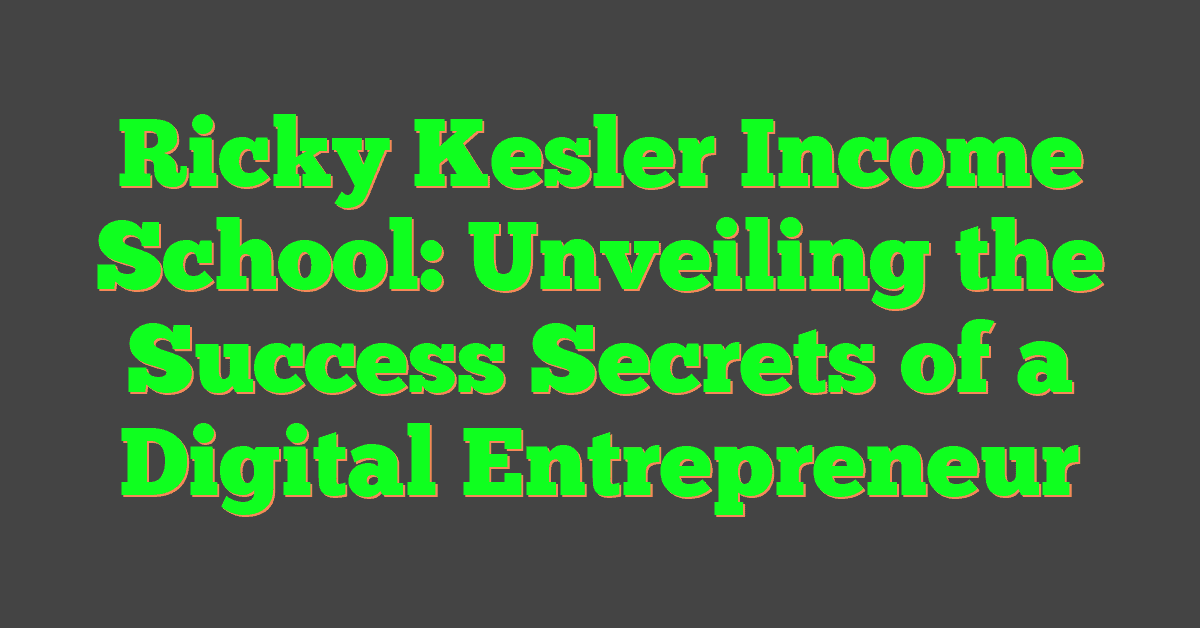Creating a distinctive logo for your brand is a pivotal step in establishing your business’s identity and ensuring it stands out in the competitive marketplace. A logo serves not only as a visual mark to identify your company but also conveys your brand’s values and personality to consumers. In the vast sea of options available, finding the best place to get a logo designed can be overwhelming. Whether you’re a startup on a tight budget or a well-established enterprise looking for a rebrand, the quality and impact of your logo can’t be underestimated, as it will be a fundamental part of your brand’s communication.

The journey to the perfect logo design involves two main avenues: hiring a professional designer or using an online logo making service. Collaborating with a skilled designer can offer a custom, one-of-a-kind logo tailored to your brand’s unique needs. On the other hand, online services provide templates and tools that allow you to create a logo yourself, offering a balance between cost-effectiveness and creativity. Understanding your brand’s identity, envisioning how your logo will engage your audience, and considering scalability and versatility in various mediums is essential regardless of the route you choose. It’s crucial to have a clear idea of your brand’s core message and how you wish to express it visually through your logo before finalizing the design.
Key Takeaways
- A logo is a central element of your brand identity, symbolizing your business visually and emotionally.
- You have options between professional design services and do-it-yourself online tools to create your logo.
- Consider the broader implications your logo design has on brand engagement and ensure it scales well across different media.
Understanding Logo Design
https://www.youtube.com/watch?v=TF4_T7yMTOA&embed=true
Your logo stands as a crucial aspect of your brand’s identity—it’s the first impression and long-lasting image customers associate with your company. In this section, we’ll explore the importance of a memorable logo, its essential elements, the link between your brand’s identity and its logo, and how color psychology impacts logo design.
The Importance of a Good Logo
A good logo does more than just look aesthetically pleasing; it serves a key function in your business’s communication. Your logo is often your brand’s first point of interaction with the outside world. If people connect with your logo, the likelihood is they’ll be more open to whatever it is your brand is offering them.
Elements of a Striking Logo
Every striking logo is composed of several elements that work harmoniously together:
- Simplicity: Your logo should be easy to recognize and understand, ensuring it’s memorable.
- Relevance: The symbols, colors, and fonts should align with what your brand stands for.
- Versatility: An effective logo should work across various mediums and applications.
- Timelessness: Your logo should not be so trendy that it becomes dated quickly.
Brand Identity and Logo Connection
Your logo is a visual embodiment of your brand identity. It reflects your company’s values, services, and personality, thereby anchoring your brand. A well-designed logo can enhance potential customers’ recognition of your brand and plays a pivotal role in establishing your brand identity.
Color Psychology in Logos
Colors in a logo are not just about aesthetics—they’re carriers of meaning and can convey messages without words. Choosing the right color palette can evoke the desired emotional response from your audience and reinforce the intended personality of your brand. Here’s a brief guide to what different colors can signify in the world of logos:
- Red: Energy, passion, and excitement.
- Blue: Dependability, trustworthiness, and professionalism.
- Green: Growth, health, and tranquility.
- Yellow: Optimism, clarity, and warmth.
- Black: Sophistication, luxury, and formality.
Select colors that support the identity you want to portray, enhancing the entire narrative your brand wishes to convey.
Finding the Right Designer
https://www.youtube.com/watch?v=Sk1Y0P0MB0Y&embed=true
When you’re looking to get a logo designed, choosing the right designer is critical to ensure that your brand’s first impression is impactful. Whether you prefer a professional designer, a freelance talent, or a design agency, you’ll want to know what each can offer and how to evaluate their work.
Hiring Professional Designers
Professional designers offer a significant advantage in terms of experience and specialized skills. You can find them on platforms dedicated to creative services such as 99 Designs, where you can start a contest and receive multiple design concepts. Professional designers typically understand brand identity and can deliver results that align with your vision and business goals.
Utilizing Freelance Platforms
For a more budget-friendly option, consider exploring freelance platforms such as Fiverr, where you can connect with a variety of freelancers offering logo design services. Here, you can select from a diverse pool of talent, from beginner designers to seasoned experts.
Pros:
- Cost-effective
- Wide range of options
Cons:
- Varying levels of quality
- More time spent on vetting
Design Agencies vs Freelancers
Design Agencies provide a full suite of branding services and often bring a team approach to your project. Agencies usually guarantee a higher standard of work and offer comprehensive brand strategies.
Freelancers, on the other hand, can be more flexible and personalized in their service. While freelancers may offer a more intimate collaboration, it’s essential to assess their reliability and professionalism.
Assessing Designer Portfolios
Before deciding, take the time to carefully assess each designer’s portfolio. Look for:
- Clarity: Does the portfolio present the work effectively?
- Relevance: Are there examples similar to the style you’re aiming for?
- Diversity: Is there a range of creative solutions?
Reviewing the portfolio will give you insight into the designer’s aesthetic and technical skills. Be sure to consider their previous work critically and how it might align with your logo design needs.
Do-It-Yourself Logo Creation
https://www.youtube.com/watch?v=f-jopUTj5_Y&embed=true
Creating a logo on your own can be both cost-effective and deeply personal. With the right tools, you can design a logo that perfectly encapsulates your brand’s essence without the need for professional design experience.
Using Online Logo Makers
Online logo makers are a great way to start your DIY logo journey, offering user-friendly interfaces and a variety of options that cater to your creative needs. For instance, Canva’s Logo Maker allows you to craft free logos in minutes with its vast selection of pre-designed templates. You simply choose a template that aligns with your vision and customize it to your liking.
- Advantages:
- Cost-saving: Many online logo makers offer free versions.
- Easy to use: Designed for non-designers with drag-and-drop features.
Exploring Logo Generator Platforms
Exploring various logo generator platforms can help you discover the right tool for creating a professional-looking logo. Platforms like Looka combine your preferences with Artificial Intelligence to suggest logos that resonate with your brand’s style. Similarly, the Wix Logo Maker offers excellent editing tools and super-easy preset options, allowing you to fine-tune your design effortlessly.
- Key features to consider:
- AI-driven suggestions: Streamlines the design process.
- Editing capabilities: Ensures each detail of your logo can be adjusted.
Templates and Customization Options
The heart of any DIY logo platform is its library of templates and the ability to customize them. Platforms provide a starting point where you can inject your brand’s colors, typography, and symbols. Squarespace Logo Maker’s sleek templates give you a solid foundation for brands looking for minimalist and modern designs. Remember, the more customization options available, the more unique and fitting your finished logo will be.
- What to look for:
- Diversity in templates: More options lead to a unique logo.
- Customization tools: The ability to adjust every aspect of the template.
Utilizing these tools and platforms for DIY logo creation offers a balance between structure and creativity, ensuring you can proudly stand behind your brand’s new visual identifier.
Understanding the Costs

When planning for your brand’s identity, knowing the financial aspect of logo design is critical. You’ll be exploring various price points, from custom designs to free options.
Budgeting for Logo Design
Start by setting a realistic budget for your logo. Understand that prices can range drastically, so determine what you’re willing to spend. If you’re expecting a high-quality, custom logo design, be prepared to invest more. For example, certain professional design services can cost between $300-$1300, depending on the complexity and reputation of the designer or agency.
Custom Logo Design Costs
Custom designs are typically more expensive but come with the benefit of a unique and professional brand symbol. Keep in mind the value a tailored design has for your brand identity. For a 100% money-back guarantee and options for various design revisions, invest in reputable services like ManyPixels or Tailor Brands, where the price reflects not just a logo but a branding partnership.
Free vs Paid Options
If your budget is tight, you might explore free logo design tools, which can be a starting point for your branding efforts. But remember, free tools may not offer the customization and uniqueness that your brand needs to stand out. Weigh the pros and cons; a free logo now could cost your brand’s identity in the long run, while paid options offer more budget flexibility and often come with additional support and customization.
Maximizing Brand Engagement

To enhance your brand’s impact, a tailored logo is key. Think of it as more than just an image; it’s a symbol that communicates your company’s core values and connects with your target audience on various platforms.
Logo Relevance to Target Audience
Your logo should resonate with the people you’re aiming to reach. It must reflect their interests and values to create an immediate connection. When you’re getting a logo designed, consider the following:
- Demographics: Age, gender, location, and interests of your target audience.
- Brand Identity: Your logo should communicate your brand’s personality and promise.
- Choosing a design that aligns with your target audience’s expectations can solidify your brand’s place in their mind.
Leveraging Your Logo on Social Media
Social media offers the perfect stage to make your logo widely recognized. Each platform has its peculiarities, so tailor your approach:
- Profile Pictures: Use a version of your logo that’s optimized for small spaces.
- Content: Include your logo subtly in images or videos to foster brand recall.
- If you’re not sure how to do this, consider checking out the best sites for logo design for professional assistance.
Incorporating Your Logo into Marketing Materials
Every piece of marketing material is an opportunity to showcase your logo:
- Business Cards: Your logo should be the most striking element.
- Email Signatures: A small, yet clear, logo can make your emails look more professional.
- Packaging: Custom packaging with your logo can turn a box into a marketing tool.
- Ensure your logo appears consistently across all marketing materials, reinforcing your brand identity every time a customer sees your product.
Designing for Versatility and Scalability

When you’re getting a logo designed, it’s crucial to think about how it will look across different mediums – from tiny favicons in a browser tab to the sprawling signage on a billboard. Versatility and scalability ensure your logo maintains its integrity and impact, no matter the size or platform.
Creating a Logo for Various Formats
You’ll need a logo that looks just as good on a business card as it does on a website. To achieve this, start with a transparent background, which allows your logo to be placed over various backgrounds without clashing. Vector graphics are your best friend here, as they can be resized without losing quality.
Ensuring a Scalable Logo
A scalable logo retains clarity and legibility whether it’s blown up on a storefront or shrunk down for mobile apps. You should avoid overly complicated designs which can become unrecognizable when scaled down. Instead, opt for a simplified design that communicates your brand effectively at any size.
The Role of Typography and Iconography
Choose fonts that are clear and easy to read. Not every font is going to perform well across all platforms, so picking the right typography is a key factor in your logo’s versatility. Similarly, if your logo includes icons, they need to be simple enough to be distinguishable, even when the logo is the size of an app icon.
Finalizing Your Logo

After creating your prototype logo, it’s crucial to refine it to perfection, ensuring it represents your brand effectively. Paying attention to the final stages of logo design guarantees that your logo serves you well across various platforms and in different formats.
Revisions and Final Edits
Your initial design is just the beginning. It’s time to make revisions and adjustments. Focus on brand colors and image quality to ensure your logo looks high-quality across all media. If you’re working with a design team or using a website builder, use this phase to provide detailed feedback, addressing any tweaks in font, color, or graphic elements until it exactly fits your vision.
Securing Full Ownership
Once revisions are final, securing full ownership of your logo is essential. Be sure to obtain all necessary rights and files from the designer or service you’re using, including vector files and exclusive usage rights. This step is crucial for protecting your brand and avoiding legal complications.
Downloading and Using Your Logo
After perfecting your design and securing ownership, it’s time to download your logo. Obtain various file types (e.g., PNG, JPG, SVG) for different uses, ensuring a high-resolution image for print and a web-optimized file for your online presence. Most services offer a direct download link where you can acquire your logo and begin integrating it into your business materials and website. Remember, a versatile logo translates well from business cards to billboards to maintain your brand’s professional image across all touchpoints.
Additional Resources and Support
Finding the right resources, getting inspired, and having support are vital components when you’re on the journey to create a logo that defines your brand. Let’s look at how you can navigate through FAQs, find inspiration, and utilize customer support to enhance your logo designing experience.
FAQs About Logo Design
If you’re new to the logo design process, you likely have questions. Notably, platforms like 99designs and Fiverr’s Free Logo Maker provide comprehensive FAQs that can help you understand typical aspects such as pricing, design processes, and what to expect from working with a designer or using a DIY logo maker tool.
Finding Inspiration and Ideas
Brainstorming and gathering inspiration are key steps in logo design. For curated galleries exemplifying inventive logo concepts, sites like Logo Design Love offer extensive collections for your perusal. To tap into a broader vein of creativity, Fit Small Business can connect you to a selection of the best sites for logo inspiration, both paid and free.
Customer Support for Design Platforms
When you’re collaborating online for your logo design, customer support is indispensable for a smooth experience. Design platforms typically provide multichannel support options, including live chat, email, and knowledge bases. Responsive customer service is an integral offering from JUST™ Creative, ensuring help is at hand whenever you need guidance through your logo design journey.




